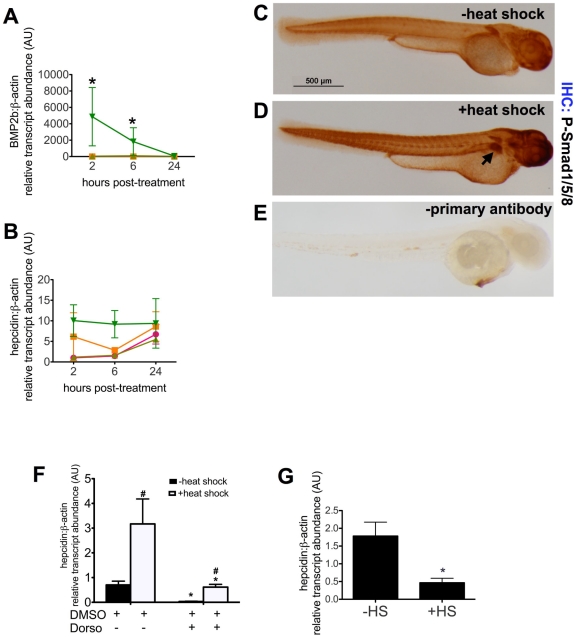Figure 1. The BMP pathway regulates hepcidin expression in zebrafish embryos. A–B.
Time course of bmp2b and hepcidin expression following induction of BMP2b expression. Tg(hsp70:bmp2b) is a transgenic line of zebrafish, which carries the BMP2b gene under the control of the hsp70 promoter. At 48 hours post-fertilization (hpf), WT or tg(hsp70:bmp2b) groups of embryos (n = 20 embryos per group) were subjected either to heat shock (+HS) at 37°C for 40 min or maintained at the usual temperature (28°C) (−HS). Pools of embryos were obtained for RNA extraction at 2, 6, and 24 hours after the start of heat shock, corresponding to 50, 54, and 72 hpf. Quantitative real-time RT-PCR was performed to measure transcript levels of bmp2b (A) or hepcidin (B), normalized to β-actin transcript levels and measured as fold increase over control, WT,−HS at 2 hours post-treatment. Data shown are means ± SE. * indicates p<0.05, compared to control. N = 2 pools per group. WT, −HS (pink circles), WT, +HS (orange squares), transgenic, −HS (light green triangles), transgenic, +HS (dark green triangles). C–E. Immunohistochemistry for P-Smad1/5/8. Compared to zebrafish embryos without BMP2b induction (C), P-Smad1/5/8 staining is increased in the liver (arrow) in tg(hsp70:BMP2b) embryos following heat shock (D). Omitting the primary antibody (anti-P-smad1/5/8), but including the biotinylated anti-Rabbit IgG/streptavidin horseradish peroxidase resulted in very low levels of background staining (E). N = 20 embryos per group. F,G. Inhibition of hepcidin expression by dorsomorphin (F) or noggin3 (G). F. From 28–55 hpf, pools of tg(hsp70:BMP2b) embryos were treated with the BMP inhibitor, 40 µM dorsomorphin (+Dorso), or treated with an equivalent amount of DMSO vehicle alone (+DMSO). Half the pools of embryos were subjected to heat shock at 48 hpf to induce bmp2b expression, followed by fixation at 55 hpf for quantitative real-time RT-PCR. G. Pools of embryos carrying tg(hsp70:noggin3) were subjected to heat shock or no heat shock at 48 hpf. The embryos were fixed at 55 hpf for quantitative real-time RT-PCR. Data shown are means ± SE. N = 4–5 pools per group. * indicates p<0.05, compared with no heat shock and no dorsomorphin treatment. # indicates p<0.05 compared with previous column.

